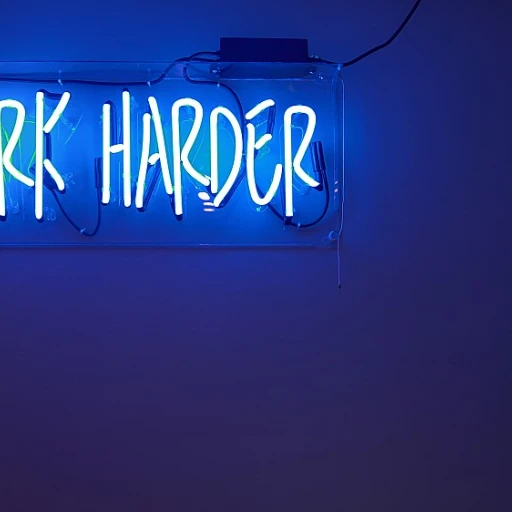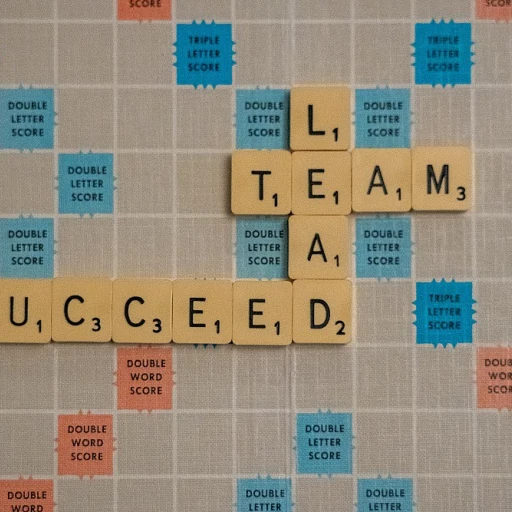Understanding Continuous Improvement
Grasping the Basics of Continuous Improvement
Continuous Improvement isn't just for big business. From the small project management tweaks in a local business to the grand strategies in lean manufacturing, it plays a vital role in making processes better. This concept is all about gradually and systematically enhancing the way a team or individual operates. But what does that mean in real terms?
Think of it as a continuous process of searching for better ways to get stuff done. We're talking about improving quality with every run, perfecting skills with each attempt, and using time wisely. It’s a mindset that can jazz up those personal skills on your resume while also helping you achieve operational excellence in any project you handle.
In many scenarios, you’ll find improvement managers or process improvement experts in the thick of the action. They’re the folks with a knack for identifying root analysis opportunities and coming up with ways to optimize processes. But even if you don’t have 'Improvement Manager' on your business card, you can still reap the rewards.
With methods like lean sigma and tools like stream mapping, continuous improvement becomes a manageable task. For example, a team in lean manufacturing might apply quality management techniques by collecting data and refining processes over time. These skills can even show up on your manager resume or skills section—proving your prowess in adopting a culture of continuous refinement.
If you’re wondering how to implement these strategies in your own life or business, there's plenty of guidance available. From implementing continuous learning strategies for success to mastering key digital skills, there's a treasure trove of resources at your fingertips.
Continuous improvement is not reserved for any specific industry or job. It's an idea that speaks to everyone hoping to enhance their knowledge and capabilities. As you embark on this improvement process, let the ripple effect of your efforts resonate throughout your actions, taking you closer to your personal and professional goals.
Key Skills for Continuous Improvement
Essential Abilities for Progress
When it comes to continuous improvement, having the right skills can make all the difference. Whether you're in project management, lean manufacturing, or business process optimization, certain abilities are indispensable. Here's a closer look at some of the most valuable skills that improvement managers and teams can develop to enhance their effectiveness.
Problem-Solving and Root Cause Analysis
Every improvement process starts with identifying and solving problems. This means not just putting out fires but understanding the root causes of issues. Tools like root analysis and stream mapping can help you dig deeper into problems and find lasting solutions. Improvement managers who excel in this area can significantly boost quality management and operational excellence.
Data-Driven Decision Making
In today's data-rich environment, making decisions based on solid evidence is crucial. Lean Sigma and other methodologies emphasize using data to drive improvements. Whether you're working on a manufacturing line or in a business office, being able to interpret data and apply it to your processes is a game-changer.
Team Collaboration and Communication
No improvement process happens in isolation. It requires a team effort. Strong communication skills ensure that everyone is on the same page and working towards the same goals. Effective collaboration can lead to innovative solutions and a culture of continuous improvement within your organization.
Time Management and Project Planning
Improvement projects can be complex, requiring careful planning and time management. Skills in project management help keep initiatives on track and ensure that resources are used efficiently. This is where tools like lean project management come into play, streamlining processes and maximizing productivity.
Adaptability and Continuous Learning
Finally, the ability to adapt and learn continuously is perhaps the most important skill of all. The business world is always changing, and those who can keep up will thrive. Engaging in training and development, like microlearning, can provide the flexibility needed to stay ahead. Check out our article on boosting growth with microlearning for more insights.
These skills are not just for the resume. They are vital for anyone looking to make a real impact in their role. Whether you're an improvement manager or part of a team, developing these abilities can lead to greater success and satisfaction in your work.
Developing a Growth Mindset
Cultivating the Right Attitude for Growth
Fostering a growth mindset can make a tremendous difference in mastering continuous improvement skills. At its core, a growth mindset revolves around the belief that you can always hone your abilities through dedication and hard work. This attitude fuels personal and professional advancement and resilience in the face of setbacks. Here’s how to build such a mindset:- Embrace Challenges: Treat each challenge as a project management opportunity rather than a setback. Lean into the discomfort, as it’s often an indication of learning in progress.
- Value Effort Over Results: Shift focus towards the learning and progress over immediate results. The effort becomes a part of the learning process, directly leading to skill enhancement.
- Celebrate Small Wins: Recognize incremental improvements. Every step forward in lean manufacturing processes, for instance, adds up to significant progress over time.
- Learn from Criticism: Feedback is essential for improvement. Utilize critiques as tools to drive quality management and elevate your skills continuous.
- Be Inspired by Others' Success: Instead of comparing, let others' success stories motivate you. This attitude can foster a supportive team culture that encourages shared learning experiences.
Practical Strategies for Skill Enhancement
Embracing Methods for Skill Enhancement
Getting better at what we do isn't all books and classroom stuff. It's more like finding treasure chests of learning hidden in our daily work. Think of a process where every step brings a chance to become even sharper. The continuous improvement process isn't as fancy as it sounds. It’s about tweaking little things here and there that make our skills sizzle. Whether you're working in manufacturing with lean sigma practices or juggling tasks in project management, you can always pick up smarter ways to get things done. ### Practical Tips for Daily Practice- Set Micro Goals: Break down bigger challenges into tiny, bite-sized tasks. This methodology can be seen in lean manufacturing, where each step in a process—like stream mapping—leads to fine-tuning.
- Feedback Loops: Pay attention to insights from peers, mentors, and even self-reflection. It's the chatter and exchange within your team that keeps the improvement wheel turning and can enhance quality management.
- Time Blocks: Carve out slots in your day for intentional learning. It can be as simple as watching a tutorial or dissecting data from a short project, much like how an improvement manager would analyze data for process improvement.
- Role Play: Enact scenarios related to business processes. Think how management trainees might simulate project tasks to grasp skills quicker.
- Cross-Training: Work in different areas of your business or team to understand various aspects, much like how lean sigma stresses understanding complete operations for smoother processes.
- Quality Circles: Engage in discussion groups that focus on problem-solving and sharing process improvement techniques. These are informal yet impactful sessions.
Overcoming Challenges in Continuous Learning
Facing Hurdles in the Learning Journey
Continuous improvement is a process that doesn't come without its fair share of bumps. Whether you're in project management or lean manufacturing, challenges are a constant companion. But don't let them trip you up. Tackling these obstacles head-on can turn them into stepping stones.
Balancing Time and Priorities
Time management is a beast, especially when juggling multiple projects. Improvement managers often find themselves buried under a mountain of tasks. The trick is to prioritize. Start with a skills resume that outlines your current abilities and areas for growth. Use lean sigma tools to streamline processes and cut down on time-wasting activities.
Adapting to Change
Change is the only constant, and it can be unsettling. In business process improvement, adapting to new tools or methods is crucial. Take lean manufacturing as an example. It requires a shift in mindset and operations. Embrace the change by fostering a culture of continuous improvement within your team. Encourage open communication and feedback, which can ease the transition and enhance quality management.
Overcoming Resistance
Resistance is natural when new processes are introduced. People are creatures of habit, after all. As an improvement manager, it's your job to guide your team through the initial discomfort. Use root analysis to identify the core of the resistance. Is it a lack of training or fear of the unknown? Address these concerns with clear communication and practical examples of successful implementations.
Utilizing Data Effectively
Data is a powerful ally in continuous improvement, but only if used correctly. Many managers struggle with data overload. To make sense of it all, focus on relevant metrics that align with your goals. Stream mapping can help visualize processes and identify areas for improvement. Remember, it's not about collecting data; it's about using it to drive meaningful change.
Building a Supportive Culture
At the heart of overcoming challenges is a supportive culture. When teams are encouraged to learn and grow, they become more resilient. Regular training sessions and open forums for discussion can foster this environment. By building a culture of continuous learning, you not only improve processes but also enhance team morale and engagement.
Leveraging Technology for Continuous Improvement
Tech Tools: Your New Best Friends
Technology is like that friend who's always there to help you out. In continuous improvement, it’s your go-to for streamlining processes and boosting efficiency. Think about tools like Lean Sigma and Six Sigma that are used in quality management to reduce waste and enhance productivity. They’re not just buzzwords; they’re practical methods that have shown results in manufacturing and business process improvement.
Data: The New Gold
In today’s fast-paced business environment, data is king. Improvement managers rely heavily on data to make informed decisions. Tools like process mapping and root cause analysis help in identifying bottlenecks and inefficiencies. By understanding data, you can optimize processes, saving time and resources. Whether you’re in project management or quality management, data-driven decisions are the way forward.
Training and Development: Keep the Wheels Turning
Continuous learning isn’t just a buzzword; it’s a necessity. Regular training sessions keep teams updated with the latest techniques in lean manufacturing and operational excellence. An improvement manager knows that a well-trained team is more likely to excel in their roles, leading to better project outcomes. Investing in skills training is like putting fuel in a car; it keeps everything running smoothly.
Examples in Action
Let’s talk about some real-world examples. Companies like Toyota have mastered the art of lean manufacturing, consistently producing high-quality products while minimizing waste. Their success is not just about tools and processes; it’s about creating a culture of continuous improvement. By fostering an environment where every team member is encouraged to contribute ideas, they’ve set a benchmark in the industry.
Time Management: The Unsung Hero
In the hustle and bustle of business, time is your most valuable asset. Effective time management can make or break a project. Using project management tools can help you keep track of deadlines and allocate resources efficiently. Remember, time saved is money saved, and that’s a win for any business.
Building a Culture of Continuous Improvement
It’s not just about the tools and data; it’s about building a culture that values continuous improvement. This means encouraging open communication, fostering teamwork, and recognizing achievements. When a team feels valued and heard, they’re more likely to contribute positively to the improvement process. This culture shift can transform the way your business operates, leading to sustained success.












